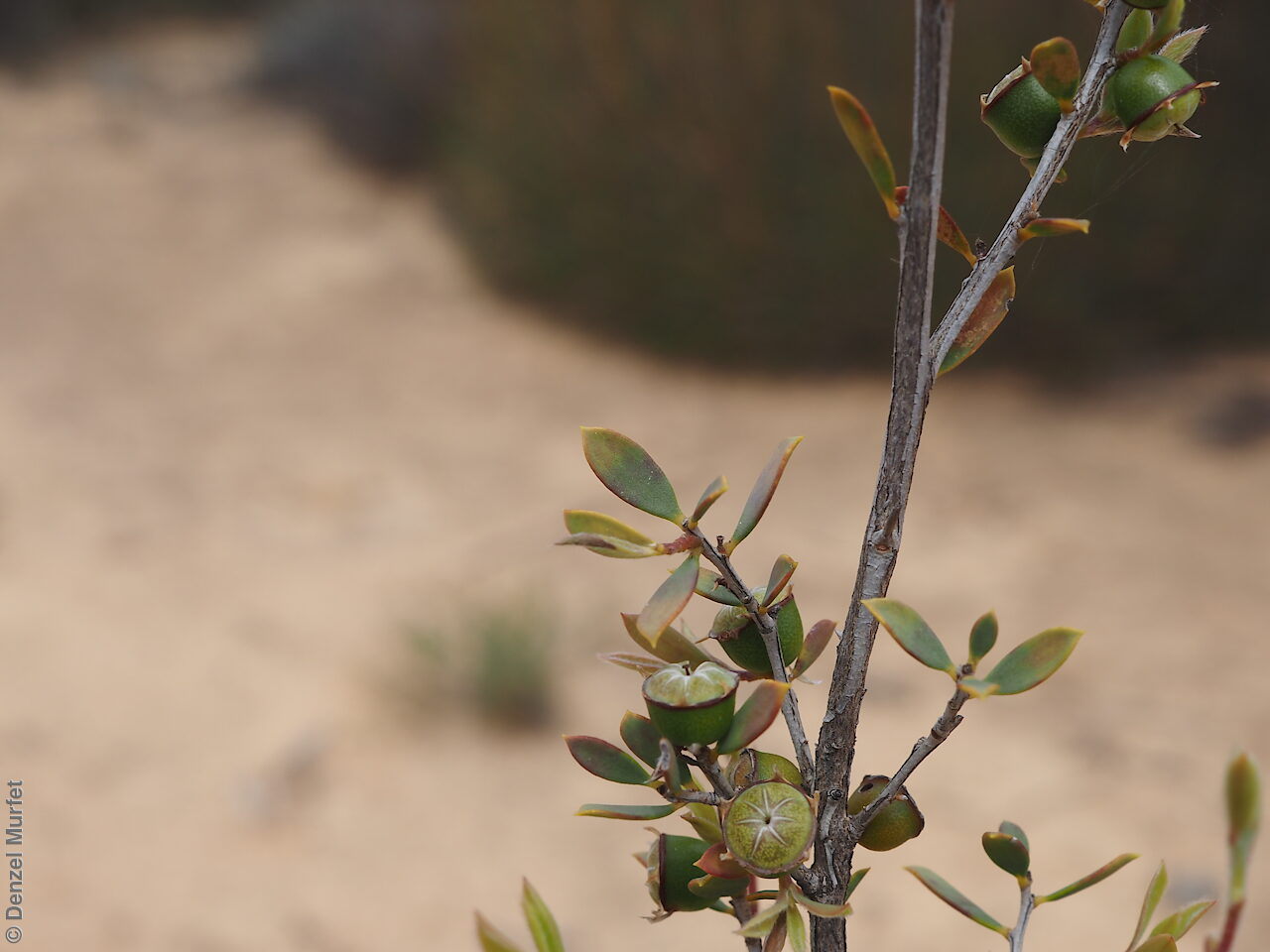
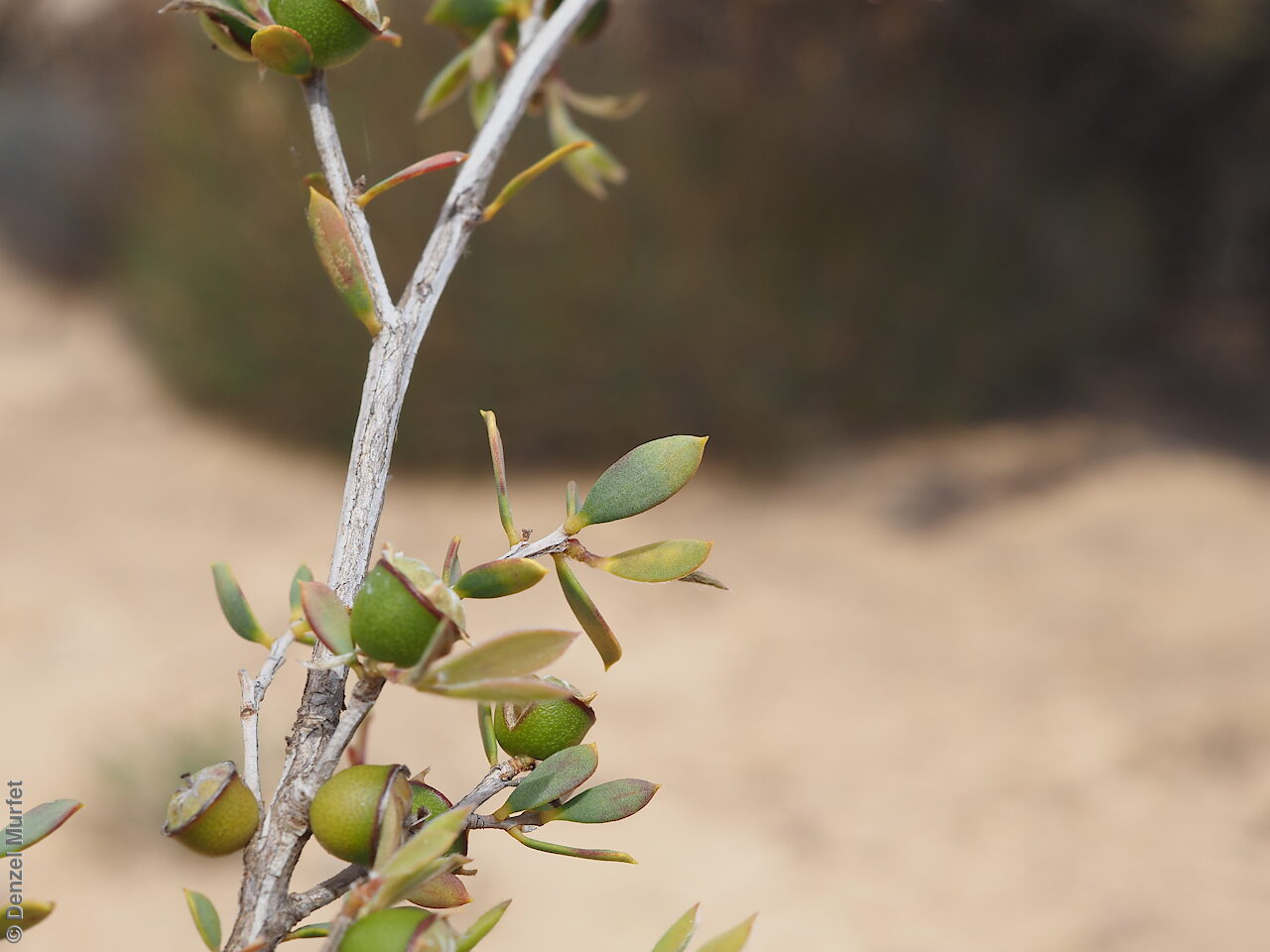
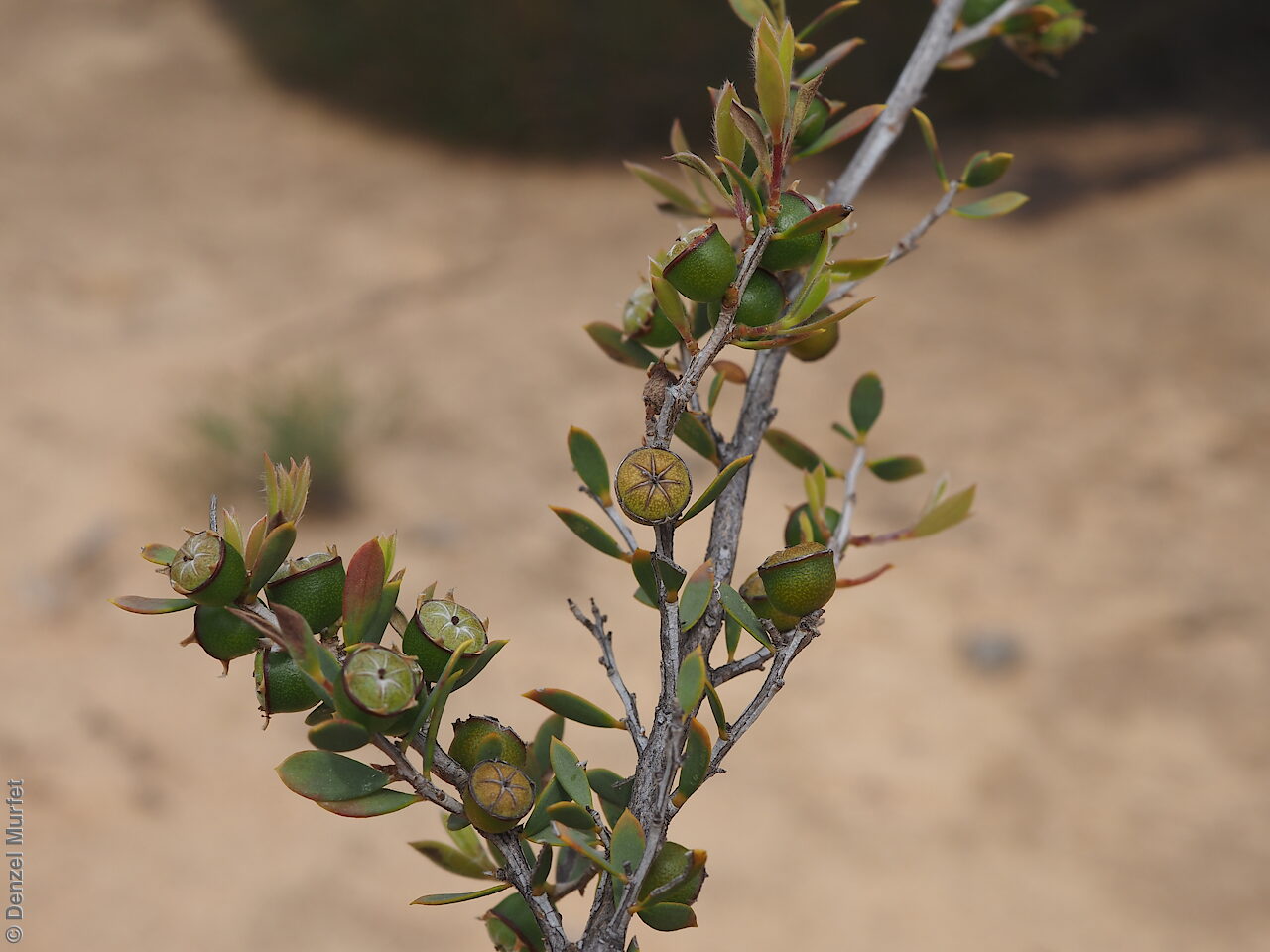
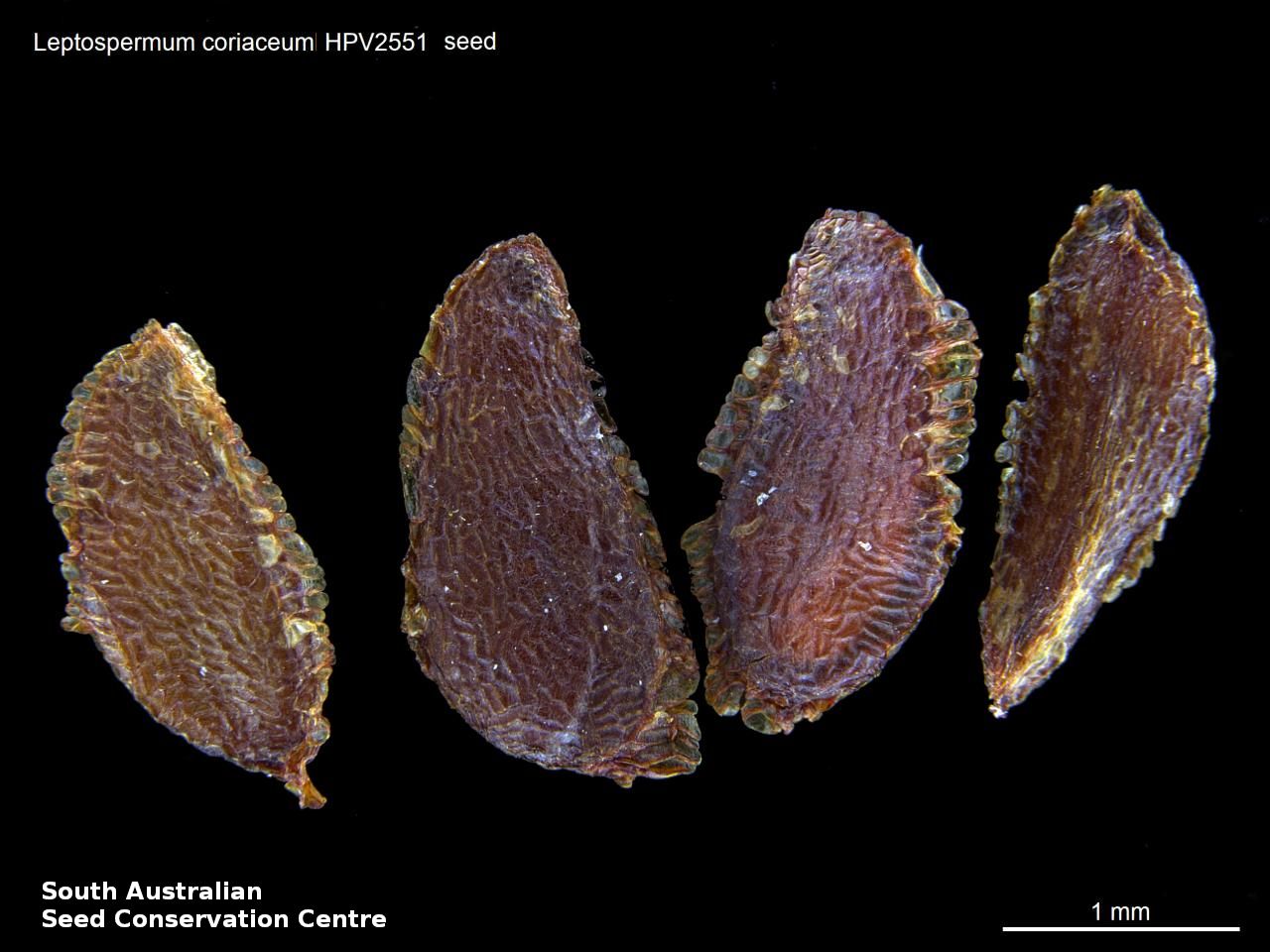

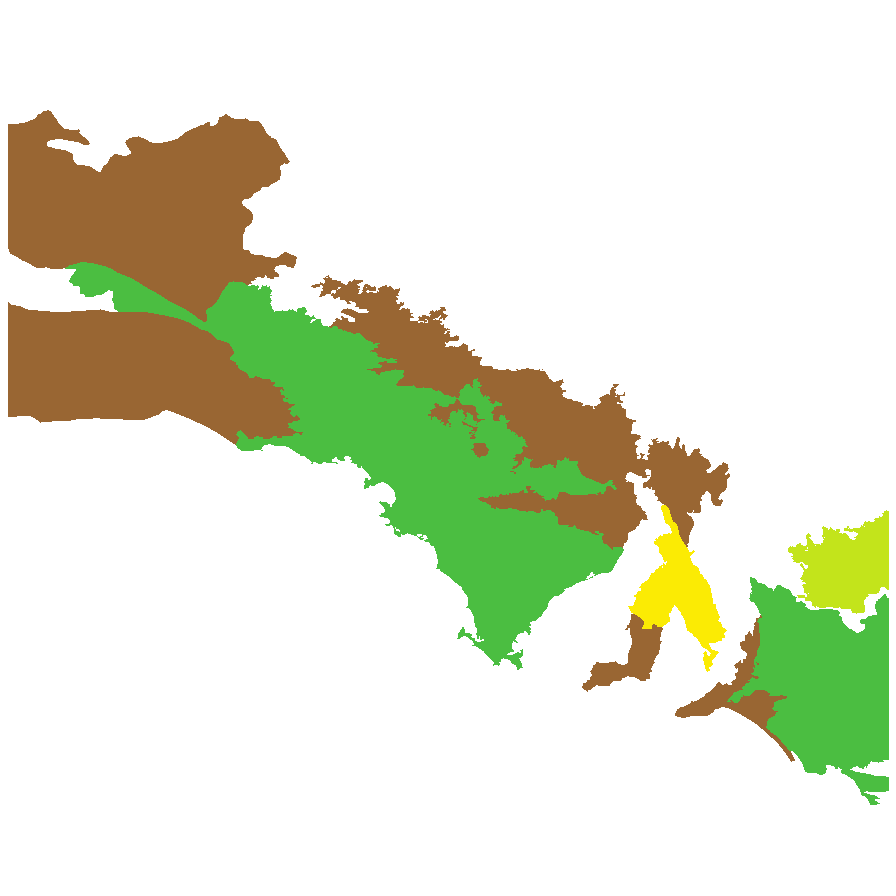
Botanical art
Prior names
Leptospermum laevigatum var. minus
Fabricia coriacea
Common names
Green Tea-tree
Dune Tea-tree
Etymology
Leptospermum from the Greek 'leptos' meaning fine, thin or slender and 'sperma' meaning seed; referring to the narrow seeds of the type species. Coriaceum from the Latin 'corium' meaning leather; possibly referring to the thick leaves.
Distribution and status
Found in the southern part of South Australia, except on Kangaroo Island and the lower South-east, growing in mallee-heath and heathlands on inland dunes on sandy soils. Also found in New South Wales and Victoria. Native. Common in South Australia. Common in the other states.
Herbarium regions: Nullarbor, Gairdner-Torrens, Eyre Peninsula, Northern Lofty, Murray, Yorke Peninsula, Southern Lofty, South Eastern
NRM regions: Adelaide and Mount Lofty Ranges, Alinytjara Wilurara, Eyre Peninsula, Northern and Yorke, South Australian Arid Lands, South Australian Murray-Darling Basin, South East
AVH map: SA distribution map (external link)
Plant description
Spreading shrub to 2 m high. Leaves flat, ovate to oblanceolate or elliptic, to 20 mm long and 5 mm wide, glabrous, usually yellow-green or light green. Inflorescence borne on short axillary shoots with white flowers to 15 mm wide, petals broadly obovate. Flowering between June and October. Fruits are woody fruit to 8 mm wide, deciduous. Seeds are semi-flat reddish-brown ovoid seed to 2.3 mm long and 1 mm wide, with narrow wing around the edge and a reticulate surface. Seed embryo type is folded.
Seed collection and propagation
Collect seeds between January and December. Collect mature capsules, those that are turning brown, hard with non-open valves. Mature fruits can remain on the plant unopened for sometime but will eventually shed. Place the capsules in a tray and leave to dry for a week or two. This allows the valves on the fruit to open and release the seeds. Separate the seeds by placing all the materials into a bucket and shaking it to dislodge the seeds. Pass the material through a sieve to separate the unwanted material. The finer material will contain both seeds and frass usually distinguishable from each other. With finer sieves, the seeds can be separated from the frass but this is not essential for storage or propagation. Store the seeds with a desiccant such as dried silica beads or dry rice, in an air tight container in a cool and dry place. From one collection, the seed viability was average, at 65%. Seeds are non-dormant, viable seed should germinate readily.
| Location | No. of seeds (weight grams) | Number of plants | Date collected | Collection number Collection location | Date stored | % Viability | Storage temperature |
|---|---|---|---|---|---|---|---|
| BGA MSB | 43,600 (45.79 g) 43,600 (45.79 g) | 50+ | 5-Sep-2005 | HPV2551 Eyre Peninsula | 8-Aug-2006 | 65% | -18°C |
Number of plants: This is the number of plants from which the seeds were collected.
Collection location: The Herbarium of South Australia's region name.
% Viability: Percentage of filled healthy seeds determined by a cut test or x-ray.